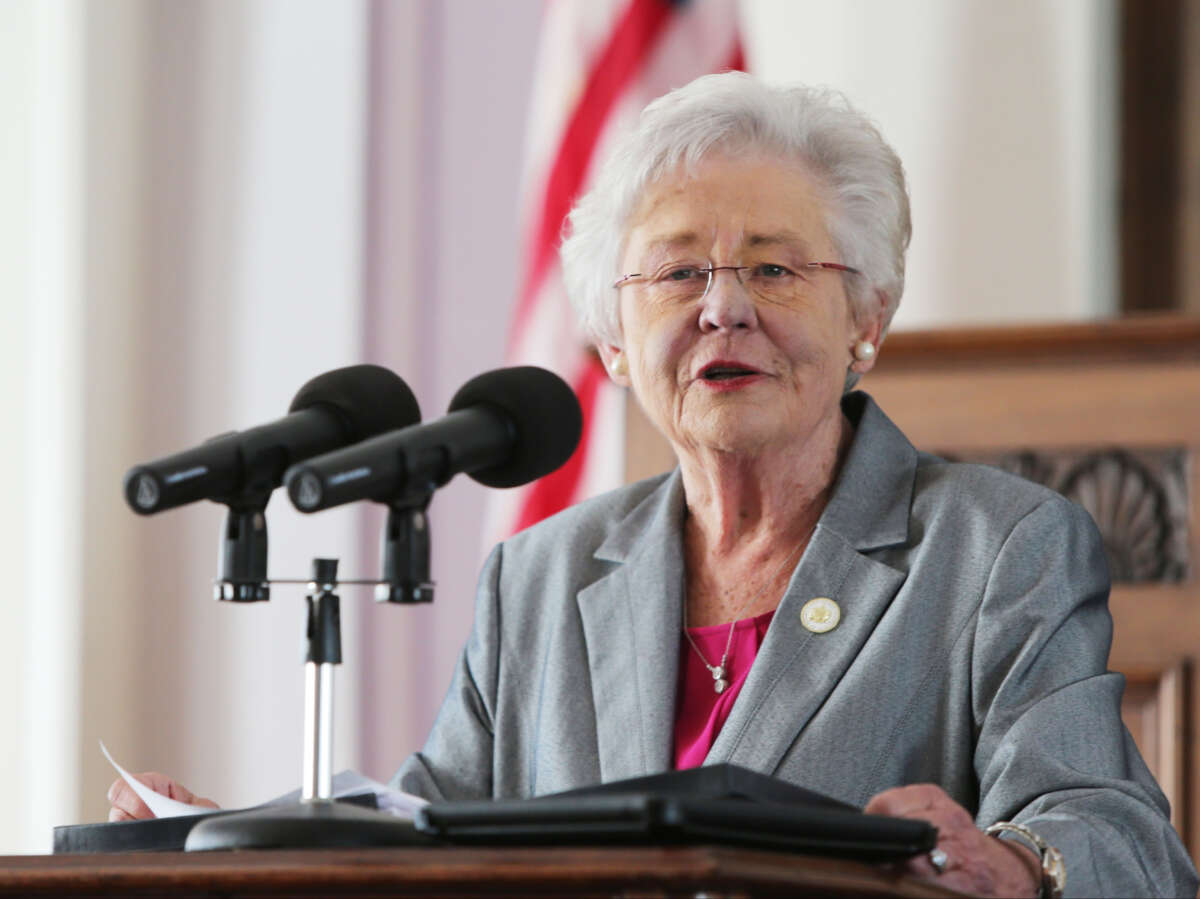Late last week, Alabama Republican Gov. Kay Ivey signed into law a new congressional map, passed by the state legislature, in response to a Supreme Court order last month, which had affirmed a lower court’s mandate that the state had to have at least two districts in which Black voters were the majority, or “something quite close to it.”
In spite of that mandate, the new map includes only one district where Black voters are a majority. A second district doesn’t even reach a 40 percent threshold of Black voters, raising doubts that it would fit the Court’s parameters.
Ivey praised the state legislature for drawing the map, seeming to acknowledge in her comments — which invoked states’ rights arguments from decades past — that their action was meant to defy the order.
“The Legislature knows our state, our people and our districts better than the federal courts or activist groups, and I am pleased that they answered the call, remained focused and produced new districts ahead of the court deadline,” Ivey said on Friday.
Media observers were critical of the new map approved by Ivey and Republicans in the state legislature.
“Alabama’s Republican Governor didn’t even try to pretend like she was following the court’s order,” said The Root’s Jessica Washington.
“Ivey’s comments “echoed a racist trope of segregationists, who would falsely blame unrest on ‘outside agitators’ much as Ivey singled out ‘activist groups,'” Daily Kos’s elections staff writers wrote.
“Ivey’s statement is almost worse than the passage of the bad map itself,” judicial journalist Chris Geidner said on Twitter.
The order from a federal judge, who ruled on the issue last year, demanded that state lawmakers redraw a map to create two districts in the state in which Black voters would be the majority, or “something quite close to it.” Alabama GOP lawmakers appealed that decision to the U.S. Supreme Court, which affirmed the lower court’s findings earlier this year, stating that the gerrymandered map had violated the Voting Rights Act.
The Court’s ruling meant that the lower court’s decision had to be applied. But the new maps, which will be examined by that same lower court next month, may not survive scrutiny, as they do not appear to comply with the standards laid out by the judge. In the event that the court finds that the new map is still in compliance with the Voting Rights Act, the courts could appoint a third-party special master to produce a new map instead.
District 7 features a 50.65 percent Black voting age population, while only 39.93 percent of voting age residents in District 2 are Black, according to reporting from CNN.
Faith in Action Alabama, a faith-based grassroots organization, condemned the new maps as a blatant attempt to defy the Supreme Court’s order.
The new map “contradicts the spirit and letter of the law” that was affirmed by the Court last month, A.B. Sutton, Jr., chairman of the organization, said in a statement, adding:
Gov. Ivey and Alabama’s current legislative leadership are sadly trying to take us down a well-trodden Alabama byway — one that would lead to undermining the democratic rights of the African American community in Alabama. We will pray that our federal judiciary provides the needed courageous leadership to help strengthen our state’s democracy.
Rep. Chris England, a Democrat in the state legislature, also expressed doubts about Republican lawmakers’ intentions in crafting the new map.
“I am convinced that passing a non-compliant map was the plan all along,” England said. “We could have saved time and money by not doing anything and just letting the court draw it.”
Join us in defending the truth before it’s too late
The future of independent journalism is uncertain, and the consequences of losing it are too grave to ignore. We have hours left to raise the $12,0000 still needed to ensure Truthout remains safe, strong, and free. Every dollar raised goes directly toward the costs of producing news you can trust.
Please give what you can — because by supporting us with a tax-deductible donation, you’re not just preserving a source of news, you’re helping to safeguard what’s left of our democracy.
